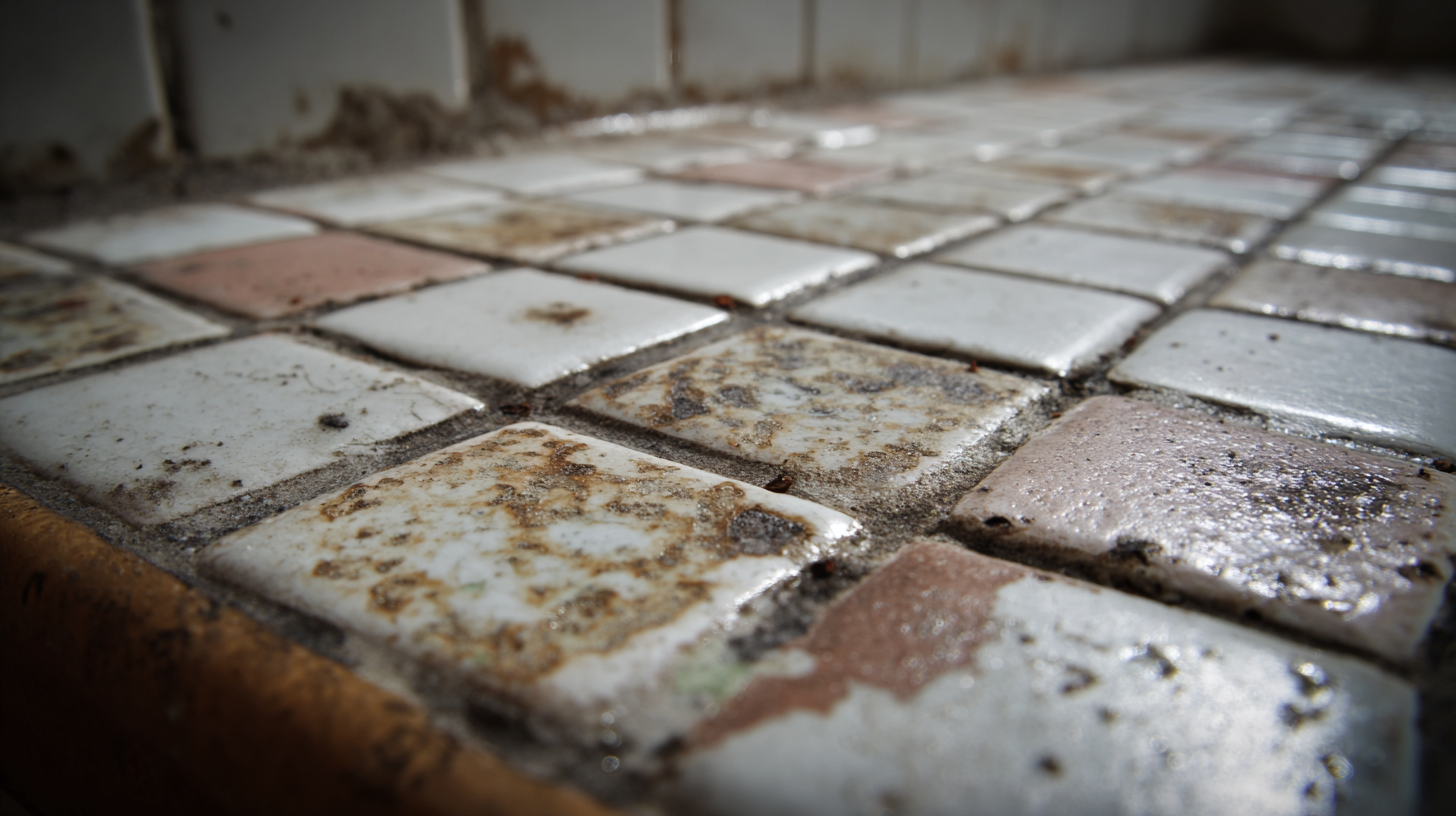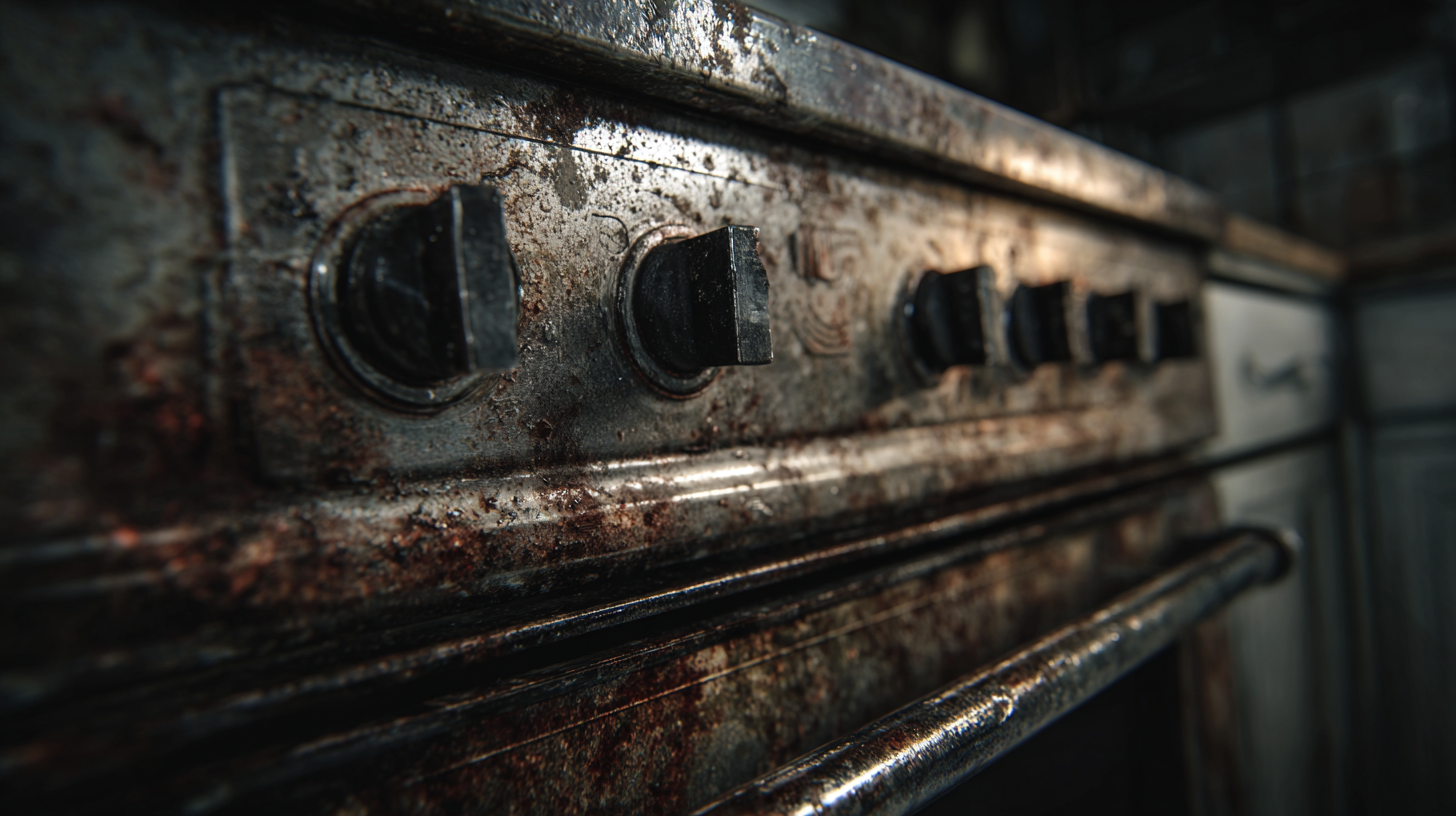Why grout and tile develop mold, soap scum, and stains
Grout and textured tile are doing what they were made to do. Grout is porous and some tiles have textured surfaces that trap tiny pockets of moisture, dirt, and body oils. Left damp, those pockets become perfect spots for mold and mildew to take hold. Here in Madison and Huntsville, Alabama, our warm muggy summers and frequent showers mean those pockets stay wet longer than they would in drier climates, and that makes a big difference. Add in seasonal allergens and the red clay dust that drifts in after yard work or a busy hosting weekend, and you have more organic matter sitting on grout lines where mold can feed and spread.
It also helps to know that what looks like a single stain is often a stack of different deposits. Hard-water minerals from our local water, soap residue from body wash and shampoo, and everyday spills from cooking or beverages all layer up over time. Those mineral and soap layers bond to grout and textured tile so the mark looks permanent even when the surface seems clean. Problems get worse when a bathroom or laundry room has poor ventilation, when towels and mats are left to air-dry in place, or when grout sealer has worn off or expired and no longer repels water. That combination lets moisture sit on and inside grout instead of beading off and evaporating.
Understanding those causes helps you pick the right approach. Regularly running an exhaust fan or opening a window after showers, squeegeeing tiles, and drying grout lines with a towel reduce moisture right away, and prompt cleanup of spills prevents new layers from forming. Check your grout sealers every year or two and reapply where it’s thin so water does not keep soaking in. When you do clean, test any cleaner on a small area first and use a soft brush to avoid eroding grout. If the staining is layered or the sealer has failed, our team can assess the surface, perform a deep clean, and reseal grout for lasting protection. You can book online anytime and we’ll help set realistic expectations for restoration based on what we find.
How to inspect surfaces and prepare the area safely
Before we start any grout and tile rescue, we walk through a quick, focused inspection so we know what we are dealing with and can protect your finishes. Take a few minutes to look closely at the grout color and the tiles themselves, because those clues tell us which cleaning approach will work best. Lighter grout shows staining and discoloration more easily, while darker grout can hide residue until you disturb it. Note whether the grout feels soft or is cracked, since soft or crumbling grout usually needs repair rather than deep cleaning. Check for active mold that looks like fuzzy or spreading growth and compare that to surface residue like soap scum or mineral buildup. Also pay attention to tile type. Porcelain and ceramic are usually more forgiving, while natural stone reacts to acidic solutions and needs gentler treatment. In our humid Huntsville and Madison climate, mold can come back quickly if conditions are not corrected, and red clay tracked in from outside or seasonal allergens may look like staining but act differently when cleaned.
Preparing the area properly keeps the job safe and helps protect your home. Open windows and run an exhaust fan to ventilate bathrooms and laundry areas, and move towels, bathmats, and breakable items out of the way so they do not react with cleaners or trap residue. Remove loose debris with a soft vacuum or a dry brush before applying any solution, and always test a small, inconspicuous patch to make sure the color and finish stay intact. Put on gloves and eye protection whenever you are working with cleaners, and ask family members to keep children and pets out of the room until surfaces are rinsed and dry. Avoid mixing cleaning chemicals or using strong, undiluted solutions on sensitive tiles. If you are unsure whether a surface needs a stronger treatment or grout repair, our team offers grout and tile rescue services and you can book online for a professional assessment and safe, effective cleaning.
Safe cleaning methods for tile surfaces with mild to moderate buildup
When you first notice soap scum or surface stains on tile, we recommend starting with the gentlest approach. Fill a bucket with warm water and add a small amount of mild detergent, then wipe the tiles with a soft cloth or sponge to lift loose soap film, red clay dust and everyday dirt. Rinse thoroughly with clean water after wiping so no detergent residue is left behind, and dry the area with a microfiber cloth or towel. In Huntsville and Madison our humidity and seasonal allergens can make buildup happen faster, so a quick rinse and dry after a busy weekend of hosting can keep things looking fresh.
If soap scum still clings after that first pass, step up to a mild alkaline cleaner or a simple paste of baking soda and water. Mix the baking soda into a spreadable paste and apply it to the affected areas, letting it sit just long enough to soften the residue. Gently agitate with a soft brush or nonabrasive pad to break up the soap scum, then rinse completely and dry. Be careful not to scrub too hard on grout, since aggressive abrasion can wear it down over time. This approach is safe for most ceramic and porcelain tile and gives you a lot of cleaning power without harsh chemicals.
Mineral deposits and hard water spotting call for something slightly different. A diluted acidic rinse, such as a mixture of vinegar and water or a generic acidic cleaner, applied briefly can dissolve mineral buildup. Always spot-test first, especially on natural stone or tiles with a sealed finish, because acids can damage some surfaces. Apply the diluted solution briefly, rinse thoroughly until no acidic smell remains, and dry the surface. After cleaning we suggest good ventilation and drying to slow future mold and scum growth, particularly during humid Alabama summers.
These gentle to stronger steps cover most mild to moderate tile issues and are things you can do yourself. If you’d rather let our team handle it, we offer professional grout and tile cleaning and you can book online any time. We’ll match the right cleaning method to your surfaces and leave your bathroom or kitchen ready for your next gathering.
How to deep clean and restore grout lines
When we tackle grout restoration in homes around Madison and Huntsville, we start with a targeted routine that respects the material and the realities of our climate. The first step is to remove surface grime with a gentle cleaner and a brush, working in small sections so the cleaner does not dry on the surface. That helps when red clay dust from outside, humidity, and seasonal allergens have settled into the lines. We wet the area lightly, apply a mild cleaner, and scrub gently with a grout brush until the loose dirt lifts. Doing small areas at a time prevents streaking and makes it easy to rinse before moving on, which keeps the tile looking consistent and avoids residue that can attract more dust during our humid summers.
For stubborn stains or mold, we use a dampened poultice such as a baking soda paste or a gentle oxidizing agent applied for a short dwell time. The paste should be just wet enough to stick to the grout, not run, and we let it sit briefly before scrubbing with a grout brush and rinsing thoroughly. If you try this at home, test a small area first and avoid leaving any cleaning paste to dry on tiles. After scrubbing, rinse well and assess. Repeat the treatment only as needed. If the grout is simply stained, a second short application often does the trick. If the grout is crumbling or deeply stained beyond cleaning, repair or regrouting may be required to fully restore the look and prevent further water damage.
There are times when mechanical agitation speeds the job, especially when grout is intact but has deep set soap scum or discoloration. Use a soft rotary brush or a firm nylon bristle and keep the speed low, working in small passes so you do not erode the grout. Avoid aggressive wire brushes or high-speed abrasion because those can remove grout and make future repairs necessary. Once the grout is clean, rinse thoroughly and let it dry completely before considering whitening options or sealing. In our climate, sealing after restoration helps resist humidity driven mold and the reddish staining that can come from yard dust.
If you would rather leave this to professionals, our team at Huntsville Maid Service offers grout cleaning and restoration services and you can book online any time. We work carefully to choose the safest cleaning methods for your tile and grout, and we aim to leave your floors and showers ready for company without harsh treatment that harms the grout itself.
Finishing steps to protect tile and speed drying
After you remove mold, soap scum, and stains from tile and grout, the way you finish matters as much as the cleaning itself. We always recommend several warm water rinses with a microfiber cloth to take away any cleaner residue. Rinse, wring the cloth, and repeat until the water runs clear. That extra effort prevents hazing and that thin soap film that shows up later under bright lights or when you have guests over. In our experience here in Huntsville and Madison, where humidity is high and red clay dust tracks in on shoes, even a small amount of residue will attract grime faster. A final pass with a lightly damp microfiber cloth followed by a dry microfiber towel helps buff away streaks so your tile looks uniform and bright.
Drying thoroughly is the next step for long lasting results. Use absorbent towels or a squeegee to pull water off flat tile and grout lines, working from the highest point down so you don’t leave drips. Microfiber towels are great for absorbing the last bit of moisture and for polishing without leaving lint. Increase ventilation while you dry and for the next few hours. Open windows, run the bathroom fan, or position a box fan so air moves across the surface and carries moisture away. In our humid summers it’s especially important to remove dampness quickly to avoid mold returning, and during pollen season faster drying also reduces how much allergens settle into grout lines.
If the grout is clean and structurally sound, consider applying a grout sealer once everything is completely dry. Sealers reduce future staining and make routine maintenance easier, but you need to follow the manufacturer directions for drying time, application method, and cure time exactly. We advise testing a small, inconspicuous area first and allowing the full cure period before heavy use or hosting guests. Our team will check grout condition and can apply sealer for you if you prefer, and you can book online any time. These small finishing steps add minutes to the job, but they make a big difference in streak-free appearance, durability, and faster drying in our Alabama climate.
Maintenance routines and when professional restoration is a smart choice
Keeping grout and tile looking good in Madison and Huntsville takes a steady rhythm more than heroic scrubbing. We recommend a simple weekly quick clean and a few small habits after each shower to keep mold and soap scum from taking hold. Running a squeegee over shower walls and glass after you bathe cuts down the moisture that encourages mold, and a fast wipe with a microfiber cloth or soft brush once a week prevents grime from settling into grout lines. Those quick efforts are especially useful here where humidity, seasonal allergens, and red clay dust tracked in from outside create extra work for tile. For many homes, this routine is enough to keep tile surfaces fresh between deeper cleanings and before you host guests.
Once a month, plan a deeper wipe down where you target grout and tile more intentionally. Use warm water and a pH neutral cleaner or a gentle scrub to lift mineral deposits and stubborn soap scum before they bond with grout. Pay attention to corners, behind fixtures, and the lower portions of shower stalls that stay damp. Dry surfaces after cleaning and run ventilation to reduce lingering moisture. These monthly efforts make stains far easier to remove and extend the life of your grout and sealant, so you do not have to tackle heavy restoration later on.
We also advise an annual grout inspection to catch small problems early. Look for cracking or crumbling grout, loose or spongy areas that suggest the grout has broken down, and deep embedded stains that resist repeated household treatments. If stains persist after you try the routine cleaning a few times, if grout has deteriorated to the point of falling out, or if safely accessing the problem area requires specialized equipment, those are clear signs to consider professional restoration. Our team can assess whether a deep cleaning, grout repair, or full replacement is the right step, and we offer safe, tile-appropriate methods to restore surfaces. You can book online to schedule a visit or to have us take a closer look and recommend the most practical, long-term solution for your home.



